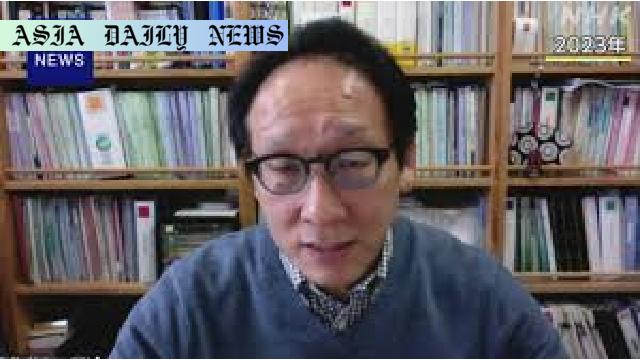Tsunami – Experts warn Japan of potential massive waves akin to the 1952 Kamchatka quake, with delays for the largest waves.

The Potential for Tsunami Devastation in Japan
The possibility of a large-scale tsunami occurring in Japan has experts on high alert. According to Professor Imamura Fumihiko from the International Research Institute of Disaster Science, Japan could be affected by a tsunami on the scale of the 1952 earthquake off the coast of Russia’s Kamchatka Peninsula. This particular event generated a roughly three-meter tsunami wave that reached Japan, devastating its coastal regions. Scientists have long studied this natural phenomenon to better understand its behavior and potential risks, with key points emerging about how tsunamis unfold, their unique timelines, and the devastating impact they can have.
Tsunamis are caused by underwater seismic activities, such as earthquakes, which displace oceanic water on a vast scale. Interestingly, Professor Imamura noted that while Japan is geographically vulnerable to such occurrences, a potential cause for concern is the unpredictability and timing of these waves. He emphasized that tsunamis caused by quakes near Kamchatka may not manifest their strongest waves immediately but could take time to build up and follow initial surges. This delay could affect preparedness and evacuation efforts, making anticipation and early warnings crucial in mitigating risks to life and property.
The Historical Parallel: Kamchatka’s 1952 Earthquake
The 1952 earthquake in Kamchatka serves as a stark reminder of how devastating tsunamis could be. At that time, the tsunami wreaked havoc on certain regions of the Japanese coast. What particularly concerns experts like Professor Imamura today is the added complexity of delayed waves. These delayed waves—potentially larger and more destructive—can present a hidden danger, lulling residents and responders into a false sense of safety after initial smaller waves pass.
Japan has focused on strengthening its disaster preparedness systems following lessons from past disasters such as the 2011 Tohoku Earthquake and Tsunami. Advanced warning systems—using seismic activity detectors, GPS buoys, and AI algorithms—have been actively rolled out to provide timely alerts. However, the phenomenon of delayed, stronger waves poses unique challenges, urging authorities and scientists to refine these systems further and emphasize community response drills targeting repeated surges of varying severity.
The Need for Ongoing Research and Citizen Awareness
As highlighted by Professor Imamura, tsunami research continues to be vital in ensuring preparedness for potential disasters. Academic institutions such as the International Research Institute of Disaster Science are spearheading initiatives to better understand local and regional earthquake patterns and tsunami characteristics. Additionally, technological advancements, like simulation modeling and machine learning, help forecast tsunami impacts more accurately. These efforts enable authorities to predict not just the scale of tsunamis but also variability in wave patterns, adjusting evacuation and rescue plans accordingly.
The responsibility, however, lies not just with scientists and authorities but also with the general public. Community education remains an important aspect of disaster prevention. Developing localized safety plans that emphasize the possibility of delayed large waves is essential. Such plans equip individuals with knowledge on how to respond even if the initial wave appears less threatening. Public drills, targeting schools and high-density residential areas, must place special focus on the unpredictability of tsunamis and encourage widespread participation to mitigate potential tragedies.
Commentary
The Challenge of Delayed Threats
The recent warnings by Professor Imamura about delayed, larger tsunami waves offer a crucial reminder to the world. Often, when disasters strike, their full impact is felt in waves—sometimes literally, as in the case of tsunamis. While early warning systems have undoubtedly come a long way, the complexity of forecasting does not allow room for complacency. A deeper understanding of these phenomena is essential, particularly in places prone to natural disasters like Japan. The eerie parallels with the events of Kamchatka’s 1952 quake make it even more necessary to closely analyze how we engage with both historical data and modern technology to prevent loss of life and damage to infrastructure.
Preparedness: Technology vs Community
While technology offers us tools for early detection and preparation, community engagement often proves to be the tipping point between lesser and catastrophic losses in such events. Professor Imamura’s insights underline a disturbing reality—many assume that initial waves dictate the overall risk, but delayed larger waves could catch even the most prepared areas off guard. This reiterates the need for constant public training and awareness campaigns, especially in vulnerable regions. True preparedness must integrate both technological advancements and grassroots-level citizen responsibility.
Learning from the Past
Histories like that of the 1952 Kamchatka tsunami are dire warnings carved into our collective memory. They remind us that the natural world operates on an unpredictable clock. For Japan, a country unfortunately familiar with seismic activity, maintaining vigilance is critical. As citizens, scholars, and policymakers work together, the focus on innovation, education, and accountability can vastly minimize future casualties, even in the face of delayed, larger tsunamis. The lessons from such events can guide not just Japan but also other tsunami-prone nations worldwide.


